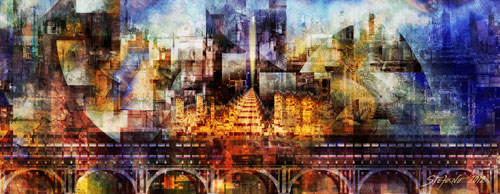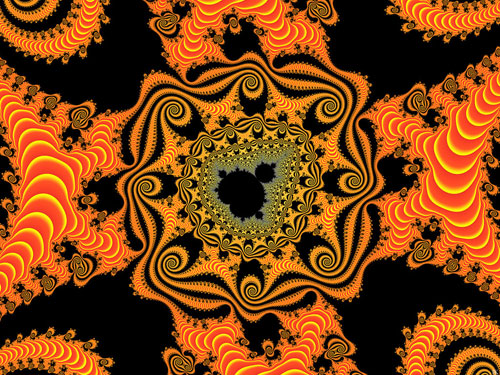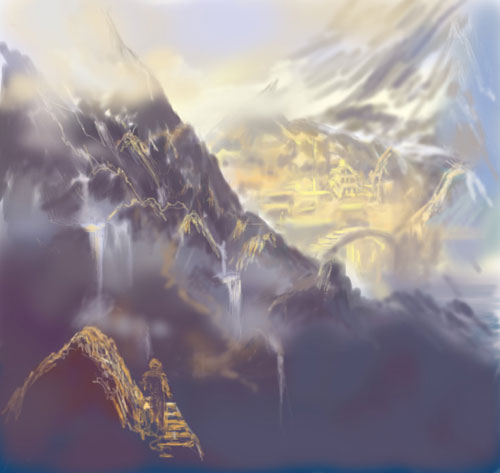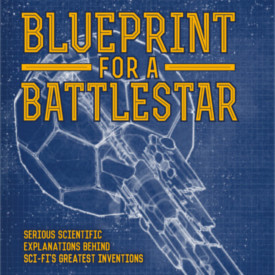
Hidden Places: Utopia, Shangri-La, the Castle of the Holy Grail, Lisbeth Salander’s flat – secret hideouts, magic realms, parallel universes, where only a Chosen One can find access. How do artists imagine them? Let’s have a look.

When I searched for images with these search terms (ok, excepting Lisbeth’s flat) – I quickly found myself deep in Fractal land.

Fractal art is a subspecies of digital art which I, admittedly, do not know very much about. It is an artform based on computer-generated visual renderings of mathematical equations: the results are often mesmerizing, trippy images which make you wonder if the computer has been on LSD.


Or they might be reminiscent of a religious Mandala. That age-old idea that all things are arranged by measure and number and weight – and that therefore mathematics is an expression of the mind of God (or however you wish to call her).
Even if you (like me) know nothing about mathematics, you will probably have heard of the Mandelbrot Set – the “footprint of the pilgrim” alluded to in the image above.

Software for generating fractals comes in 2D and 3D versions: for 3D fractal art, Mandelbulb seems to be the software most anyone uses. Don’t ask me how it works – but the results can be pretty staggering! Or staggeringly pretty, if you prefer.



Lastly, an image which is not a fractal rendering, but a straightforward digital painting. Still, it retains some of the diffuse dreaminess which most people seem to associate with their personal Utopia or Shangri-La: if you see it too clearly, if you ever actually get there, it may well turn into trite everyday routine.

All images are copyright the respective artists, and may not be reproduced without permission.










